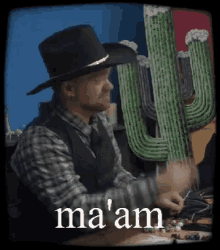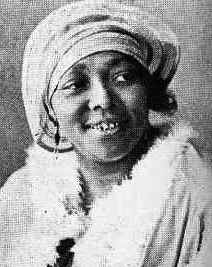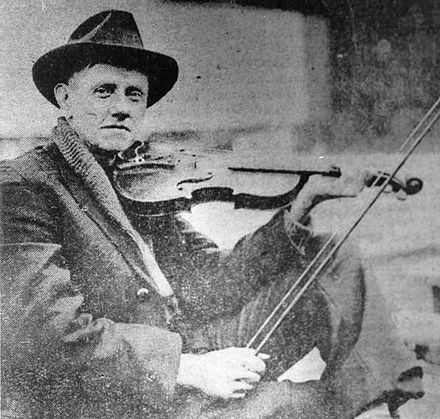But back to Carson we go, if only for a moment. Before he began to get famous he would play wherever he could turn a buck - square dances, political gatherings, even KKK meetings - but after his performances on WSB he was suddenly in great demand, and travelled the south playing theatres and dances and anywhere they wanted him. He remarked once that his “wife thinks she’s a widow most of the time, because I stay away so much! Radio made me!”
Sure, that may have been true, as far as it went, but if radio made him, it would take another medium to break him commercially and open up doors to him that radio just could not. And one man controlled that medium in the south.
 Ralph Peer (1892 - 1960)
Ralph Peer (1892 - 1960)
It’s perhaps appropriate that the man who could quite easily be called, if not the father of country music then certainly the father of country music records, should be born in a town called Independence, Missouri. After working for Columbia Records in Kansas City for several years he moved to Okeh Records, who were responsible for the “race records” just mentioned. He almost immediately found, signed and recorded Mamie Smith singing “Crazy Blues”, the first blues record aimed at a black audience. He then pioneered field recording, taking recording equipment into the south, into Georgia in 1923, searching for more black music and musicians to feature on the race records series, capturing performances from artists in places as diverse as hotel rooms and bars to their own homes.
Somewhat disappointed at the number of black artists he could find in Atlanta, he was prevailed upon to visit WSB, where he was advised to record Fiddlin’ John Carson. Dubious, he wondered if there even existed a market for “old time music”; he remembered the Victor Talking Machine Company, the biggest record label in the USA, having recorded Eck Robertson a few years earlier, and how poorly those records had sold. Perhaps the appetite just was not there. Or perhaps the right artist had yet to be discovered. When Fiddlin’ John’s record, the aforementioned “Little Old Log Cabin in the Lane”, sold out, he realised he had been right to take the chance, and immediately began advertising for and searching for other artists who could play what he called “old time music” or “hill country music”. He now saw that there was a market for, let’s be honest here, white racist music: southern whites who wanted to remember what for them were the “good old days”, back to a simpler time, gentler folks yadda yadda you know how it goes.
This was, on the face of it, and compared to the other more high-brow music of opera and jazz and classical, simple music for simple folks. The melodies were basic, the words spoke to them of their own experiences, they identified with it. It was the music of the ordinary man, the music of the working man, and they understood it readily. It was the sort of music they sung in barn dances and pubs and in their houses, but now it was being recorded and they could buy it. Many of the old ballads brought over from the British Isles had to be rewritten for an American audience, but mostly that was just a case of changing the lyrics, and the music would remain the same. So it was familiar, but slightly altered so they could identify with it, sing along with it and enjoy it all the more.
And it was theirs.
Ignoring or setting to one side for the moment the obvious horribly racist mindset of the white Appalachians, this was music they had grown up with and to be fair, they had little. This was part of their identity, songs that had been passed down from father to son for generations, usually only by the oral tradition, because, despite the nasty supercilious tone of that newspaper article, it was correct in that most of the mountain folk could not read or write. So it was important to get this music before it was lost, and Peer set out to make field recordings of it, and money from it, of course. Add to this hymns and gospel music sung in Church on Sundays and you had a recipe for whites-only, family-friendly, good, honest, moral, American music.
Of course, in reality it was far from theirs. As described earlier, the very tunes that came out of the Appalachians were inspired by and improved on by African American musicians with their banjos, guitars and other instruments, their tribal chants and their stories, their rhythms… I mean, leave it to the white mountain folk and you’d have had nothing but fiddle accompaniment to old Irish, English and Scottish ballads, and that was hardly going to start a whole new movement. But the contribution of the black community to the burgeoning behemoth that would become country music has been mostly ignored and even denied by racist white performers, who can’t bear the thought that they are making money off the backs of former slaves and non-whites. Their denial does not make it any less true though, and in recent years several authoritative sources have tried to redress this terrible wrong.
But I digress.
Peer realised that he had an untapped goldmine here, and in 1927 he “discovered” Jimmie Rodgers and then The Carter Family, recording both. Many experts have pointed to this as the real moment of the birth of country music, but whether or not that is true, it’s certainly the case that this was the beginning of an explosion of talent coming out from almost literally the woodwork, artists found in cabins and farms and hotels and at dances, all to be recorded by Peer and his label, his payment to be a share of one cent per side of a record for each of his artists in royalties, which he would divide between himself and the artist. This had never been done before, and shows the business acumen of the young executive, who now set the pace for how artists would be paid.
G.B Grayson (1887 - 1930)
Another fiddler, and another blind man at that, Grayson would go on to be instrumental (sorry) in the creation of bluegrass and country music in general. Born in South Carolina, he moved with his family to Tennessee when he was two years old and remained there all his life. Unable to gain any sort of employment thanks to his disability, Grayson took to playing his fiddle to anyone who would listen and throw him a few coins, and travelled with banjo player Clarence Ashley to play at the West Virginian coal mines. In 1927 he met guitarist Henry Whitter and the two recorded albums which sold so well that Grayson was able to buy himself a house. Sadly, he did not have long to enjoy it as he was killed the following year in a traffic accident.
Henry Whitter (1892 - 1941)
A native of Virginia, it will at this point come as no surprise to hear he learned music at an early age, and took to the guitar as his first love, though later he moved on to fiddle, banjo, piano and harmonica. He was one of the new artists picked up by Ralph Peer in 1923 to record his music, and his “Wreck of the Old Southern ‘97” became a hit, though technically in the hands of another man, Vernon Dalhart, under whom it became the first million-selling country music record. He is said not to have been a virtuoso like Carson and others, but got steady work recording and laid down some country standards. As noted above, he met fiddler G.B Grayson in 1927 and began recording with him, but after Grayson’s untimely death in 1930 Whitter never recorded again. He died in 1941 of diabetes.
 Bascom Lamar Lunsford (1882 - 1973)
Bascom Lamar Lunsford (1882 - 1973)
I don’t think I’ve ever heard of someone who began their life as a musician, went into law and then back into music, but this guy did. Born in North Carolina he played fiddle and banjo when young, then studied for a law degree in an attempt, partially at least it seems, to dispel and disprove the popular myth that all “hill folk” were illiterate and stupid. He succeeded, as he became famous as “The Minstrel of the Appalachians”, sticking very much to his family values ideals, avoiding coarse or objectionable songs and playing mostly spiritual and gospel music and ballads. Like Fiddlin’ John Carson, he used what were called at the time “negro spirituals” - music created by African Americans using their own native rhythms and their experiences of slavery (which you would have to think would certainly be frowned upon today as a form of cultural appropriation, but not then) not, it would seem, with any intention of calling to account the evils of slavery, but merely to sing about it and make no judgement.
He organised and played in the very first Mountain Dance Folk Festival, and continued to play in it every year up until his death, as well as setting up the Bascom Lamar Lunsford Minstrel of Appalachia Festival, which is still going. Like Carson, a celebrity of his day, he got involved with politics and was even invited to the White House by FDR in 1939 and performed for the then English king, George VI. He died in 1973, having suffered a stroke eight years previous.
 The Carter Family
The Carter Family
Without question one of the “founding parents” of country music, The Carter Family were a trio, an actual family and were another of the great - perhaps one of the greatest - acts brought to the notice of the public through the recording sessions held by Ralph Peer in Bristol, Tennessee. 1927 seems to have been Year One for country music; it was the year most of the artists those who know and play country are familiar with came to the fore, and the birthing pangs of the genre began to kick in. An interesting aside about the Carter Family is that their bandleader, A.P. Carter, lived in one of the most desperately poor regions of Virginia, appropriately called Poor Valley, and he found his wife, Sara, in the much more affluent Rich Valley. She transitioned with him, having married him, from Rich to Poor, literally, and life was hard on their farm.
When Ralph Peer advertised in Bristol for acts to record for him, A.P. cadged a loan of his brother’s car to make the trip, promising to weed his corn field in return. After a long trip the Carters arrived in Bristol, complete with sister-in-law Maybelle, heavily pregnant. They immediately impressed Peer, and recorded four songs for him, heading back home the next day after recording another two songs. The family forgot all about the sessions, returning to their farming life. Within three years they had sold over 300,000 records, and were able to leave their poor life behind. A.P. began travelling through the region, collecting old songs he could record, and as noted above in the section concerning him, he hooked up with Lesley Riddle in this venture.
Popular all through the south during the 1930s and 1940s, the Carter Family performed on radio stations in Texas and North Carolina, and as more children were added to the family they would take part in the performances, though never on record. However the touring schedule began to wear on Sara, to say nothing of the fact that her husband was a selfish prick who would leave her alone for weeks on end looking after the farm and the children, while he sold trees, and in 1936 she divorced him and married his cousin. They moved out to California, and in 1944 the band broke up.




 And hey, I liked that Nanci Griffith track on first listen - I've never heard her before, but really like her rhythmic style. Will have to seek out more from her.
And hey, I liked that Nanci Griffith track on first listen - I've never heard her before, but really like her rhythmic style. Will have to seek out more from her.
 As if that could ever be made up for. I wish I could somehow reverse time and take that pain away from you.
As if that could ever be made up for. I wish I could somehow reverse time and take that pain away from you.












 Linear Mode
Linear Mode
